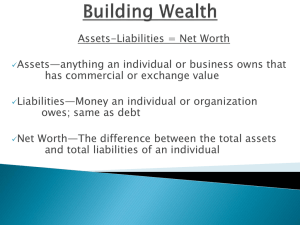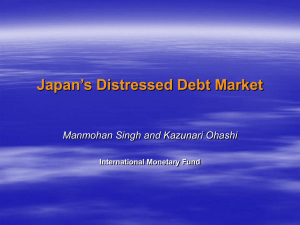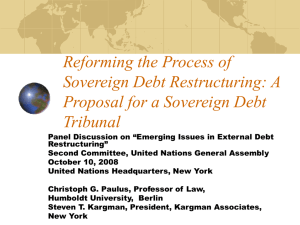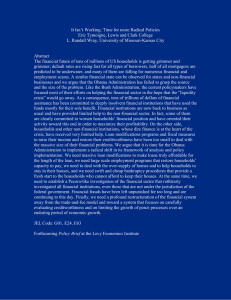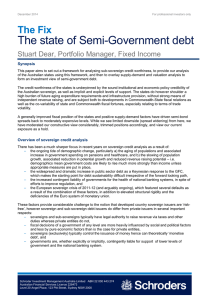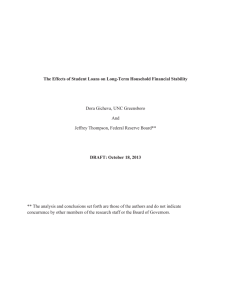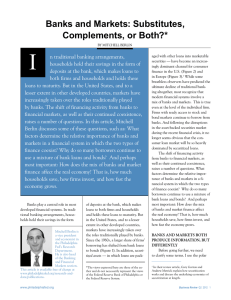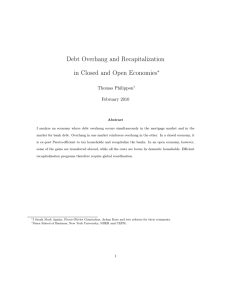International Debt
advertisement
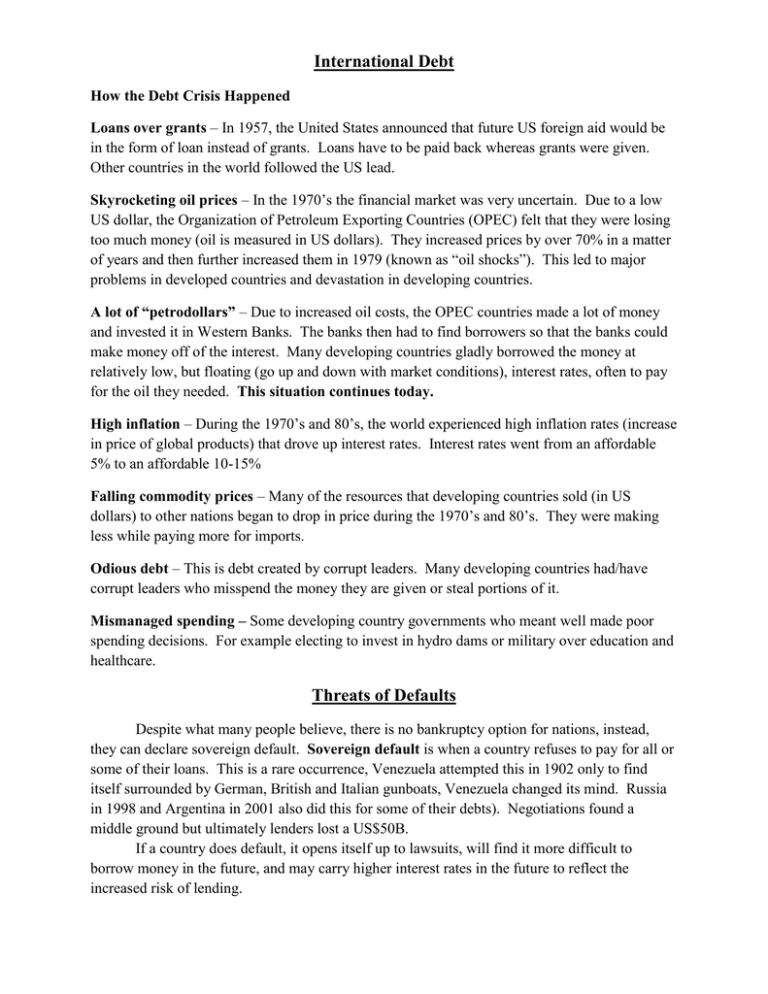
International Debt How the Debt Crisis Happened Loans over grants – In 1957, the United States announced that future US foreign aid would be in the form of loan instead of grants. Loans have to be paid back whereas grants were given. Other countries in the world followed the US lead. Skyrocketing oil prices – In the 1970’s the financial market was very uncertain. Due to a low US dollar, the Organization of Petroleum Exporting Countries (OPEC) felt that they were losing too much money (oil is measured in US dollars). They increased prices by over 70% in a matter of years and then further increased them in 1979 (known as “oil shocks”). This led to major problems in developed countries and devastation in developing countries. A lot of “petrodollars” – Due to increased oil costs, the OPEC countries made a lot of money and invested it in Western Banks. The banks then had to find borrowers so that the banks could make money off of the interest. Many developing countries gladly borrowed the money at relatively low, but floating (go up and down with market conditions), interest rates, often to pay for the oil they needed. This situation continues today. High inflation – During the 1970’s and 80’s, the world experienced high inflation rates (increase in price of global products) that drove up interest rates. Interest rates went from an affordable 5% to an affordable 10-15% Falling commodity prices – Many of the resources that developing countries sold (in US dollars) to other nations began to drop in price during the 1970’s and 80’s. They were making less while paying more for imports. Odious debt – This is debt created by corrupt leaders. Many developing countries had/have corrupt leaders who misspend the money they are given or steal portions of it. Mismanaged spending – Some developing country governments who meant well made poor spending decisions. For example electing to invest in hydro dams or military over education and healthcare. Threats of Defaults Despite what many people believe, there is no bankruptcy option for nations, instead, they can declare sovereign default. Sovereign default is when a country refuses to pay for all or some of their loans. This is a rare occurrence, Venezuela attempted this in 1902 only to find itself surrounded by German, British and Italian gunboats, Venezuela changed its mind. Russia in 1998 and Argentina in 2001 also did this for some of their debts). Negotiations found a middle ground but ultimately lenders lost a US$50B. If a country does default, it opens itself up to lawsuits, will find it more difficult to borrow money in the future, and may carry higher interest rates in the future to reflect the increased risk of lending.


